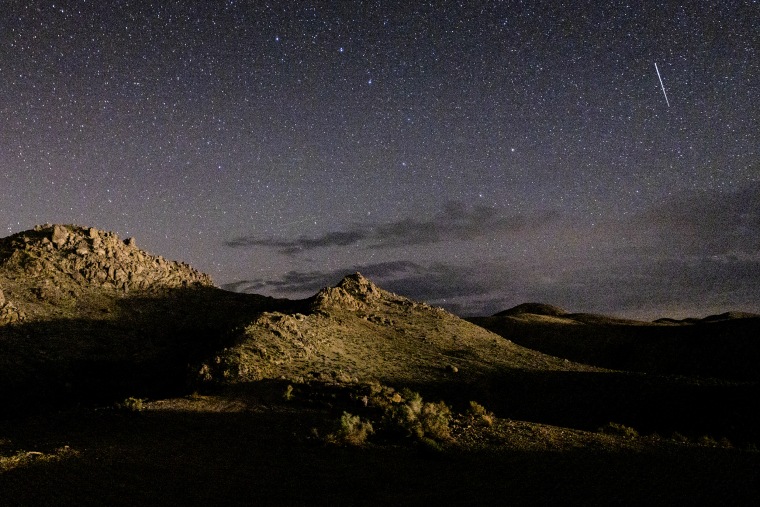It’s summer skywatching at its best: The annual Perseid meteor shower will peak this weekend and experts say this year’s display is not to be missed.
The Perseid meteor shower is typically the most impressive of the year because it can produce the highest rate of shooting stars in the night sky. This year’s peak could be even more dazzling because there won’t be a bright moon to spoil the show, said Diana Hannikainen, an editor at Sky & Telescope, a monthly magazine about science and amateur astronomy.
“It’s a very good year,” she said. “We have a waning crescent moon that rises well after midnight, in the wee hours of dawn, which means that the sky will be very dark, provided you’re away from light pollution.”
The Perseid meteor shower happens annually from around mid-July to late August, and this year’s peak occurs Saturday night into Sunday morning. Weather permitting, Hannikainen said skywatchers could see around 60 meteors per hour — and up to 90 meteors per hour in some of the darkest locations.
“That’s why the Perseids are one of the better meteor showers, because they are so prolific if you’re in a nice dark spot,” she said.
In the Northern Hemisphere, the best way to view the Perseids is to head out in the predawn hours. Hannikainen said meteor showers are best enjoyed under clear and dark skies, away from city lights and other forms of light pollution that can drown out the shooting stars.
Next, skywatchers should plan to get comfortable.
“Grab that lawn chair and settle in,” she said. “It’ll take about 20 minutes to a half hour for your eyes to adapt to the dark. Then you’ll really see the meteors pop out of the sky.”
Under clear conditions, meteors should be visible all over the sky, but the Perseids get their name because they appear to stream from a point in the sky where the constellation of Perseus is located.
“Perseus rises in the northeast in the evening, so that’s where you’ll see most of the meteors appear to come from,” Hannikainen said. “But if you look straight up, you should still see many meteors.”
Faint meteors may appear as flecks that dart rapidly in the night sky, but brighter ones may streak across for several seconds, even sometimes leaving a visible, glowing trail, according to Sky & Telescope.
She added that meteor showers are a fun activity for people of all ages, particularly because this type of skywatching requires no equipment.
“It’s one of the easiest celestial events that you can observe,” she said. “Forget binoculars, forget telescopes — your eyes are the best things to enjoy a meteor shower.”
The Perseid meteor shower is popular among amateur skywatchers because it occurs when most of the Northern Hemisphere enjoys balmy, late-summer temperatures overnight. This year’s event is also well-timed because the peak falls on the weekend.
Meteors are often called “shooting stars,” but they actually come from small bits of debris in space that burn up in Earth’s atmosphere.
The Perseid meteor shower occurs every year as Earth passes through a cloud of dust particles and debris from a comet known as 109P/Swift-Tuttle, which was discovered in 1862.

